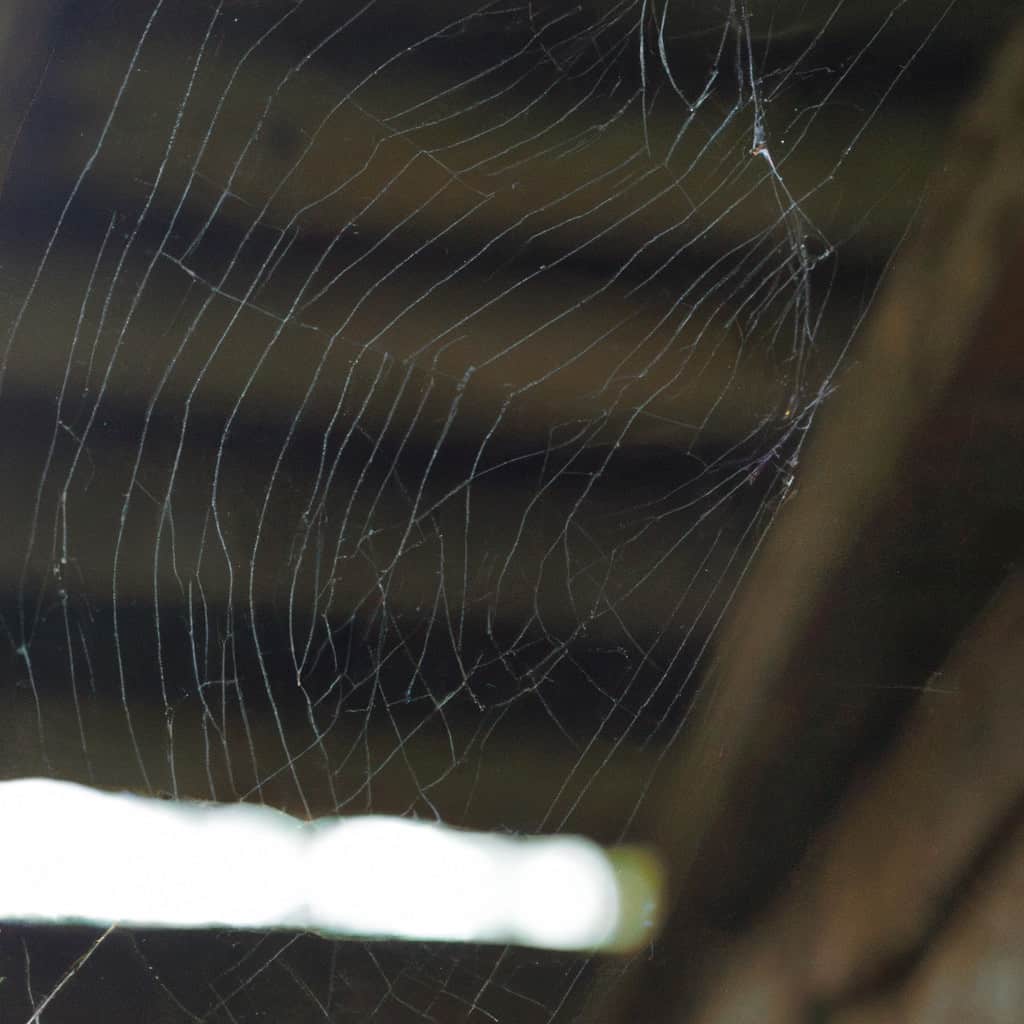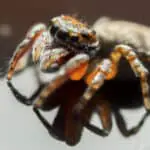Spider webs are intricate and beautiful creations of nature. They are delicate and can be easily damaged or destroyed. Fortunately, it is possible to preserve spider webs for long-term enjoyment. In this article, I will provide a step-by-step guide on how to preserve spider webs and turn them into beautiful pieces of art.
Understanding spider webs is the first step in preserving them. Spider webs are made of silk that is produced by a spider’s spinnerets. The silk is strong and flexible, and spiders use it to create intricate webs that serve as their homes and hunting grounds. Spider webs come in many different shapes and sizes, and they can be found in a variety of locations, from trees and bushes to corners of buildings and windowsills.
Key Takeaways
- Spider webs can be preserved for long-term enjoyment.
- Spider webs are made of silk produced by a spider’s spinnerets.
- Spider webs come in many shapes and sizes and can be found in various locations.

Understanding Spider Webs
Spider webs are intricate and fascinating structures that spiders use to catch their prey. They come in various shapes and sizes and are made up of different types of threads. The most common type of spider web is the orb web, which is a circular web that is suspended between trees or other structures.
Spiders create their webs using a special gland called the spinneret, which produces silk threads. These threads are then woven together to form the web. The silk threads are incredibly strong and are much stronger than steel when spun into a fine thread.
Spider webs come in a variety of shapes and sizes, depending on the species of spider that created them. Some spiders, such as the black widow, create webs that are irregular in shape, while others create webs that are perfectly circular.
It is important to note that spiders weave a new web each evening, so if you want to preserve a spider web, you need to be gentle and careful. One way to preserve a spider web is to treat it with glycerin, which is a clear, odorless liquid that is used in many cosmetics and pharmaceuticals. Another way to preserve a spider web is to use talcum powder and hairspray to set the web in place.
Overall, spider webs are incredible structures that are worth studying and preserving. By understanding how spiders create their webs and the different types of threads they use, we can gain a greater appreciation for these fascinating creatures.
Locating and Choosing the Right Spider Web
When it comes to preserving spider webs, the first step is to locate and choose the right web. Here are some tips to help you find the perfect web to preserve:
- Look in your garden: Garden spiders are common and can be found in gardens, especially in tall grass and bushes. Take a walk around your garden and look for spider webs in areas that are less disturbed.
- Check the height: Spider webs that are closer to the ground are more likely to be damaged or disturbed. Look for spider webs that are at least 3 feet off the ground to ensure they are less likely to be damaged.
- Choose an abandoned web: An abandoned spider web is best for preservation as it is less likely to have a spider in it. Tap the web lightly to see if there is a spider in it. If there is, move on to another web.
- Look for a complete web: A complete spider web is ideal for preservation. Look for a web that is still intact and not missing any strands.
Once you have located the perfect spider web, you can move on to preserving it.
Preparing for Preservation
Preserving spider webs can be a delicate process, but with the right preparation, it can be done easily. Before you start preserving the spider web, you need to ensure that you have all the necessary materials.
First, you will need a stick or any other material that can be used to mark the perimeter of the web. This will help to prevent the web from being disturbed during the preservation process.
Next, you will need a well-lit area to work in. This will help you to see the web clearly and ensure that you are preserving it correctly.
You will also need a piece of cardboard, construction paper, poster board, cardstock, or notebook paper to mount the web on. The paper should be large enough to accommodate the web without damaging it.
Once you have all the necessary materials, you can begin the preservation process. It is essential to handle the spider web gently to avoid damaging it.
To preserve the spider web, you can use clear tape or glue to mount it on the paper. However, before you do this, ensure that the area around the web is free from dust or other debris that could damage it.
Overall, preparing for the preservation of spider webs involves having the right materials and working in a well-lit area. With the right preparation, you can preserve spider webs easily and enjoy their delicate beauty for years to come.
Materials Needed for Preservation
Preserving a spider web requires a few materials to ensure the web is protected from damage and dust. Here are the materials you will need:
- Spider web of a suitable size for capturing and framing
- Black or white card stock
- Black or white spray paint (use paint in a contrasting color to your card stock)
- Spray adhesive
- Ruler and scissors
- Picture frame
- Optional: Digital camera with capability for closeup photographs for a science project
Coating the spider web in clear lacquer or resin is one way to preserve it. However, another way to preserve spider webs is to mount them on paper or cloth backing. To do this, you will need a can of spray paint, spray glue, scissors, and black or white paper.
You can create a preserved spider web by following these steps:
- Find a spider web outside that you like and bring the web inside.
- Place the web on a flat surface and spray it with a can of white or black spray paint.
- Once the paint has dried, spray the web with art fixative or hairspray to keep it from falling apart.
- Cut a piece of black or white poster board or cardstock that contrasts with your color of paint and glue the spider web onto the paper.
- Frame the spider web and display it in your home or classroom.
Using talcum powder and hairspray is another way to preserve a spider web. To do this, you will need an empty spider web, talcum powder, black construction paper, and hairspray.
Here are the steps to preserve a spider web using talcum powder and hairspray:
- Find an unoccupied spider web outside.
- Lightly tap the web to see if it is empty. If the spider moves, find another web to preserve.
- Sprinkle talcum powder over the web to help it keep its shape.
- Cut a piece of black construction paper to fit the size of the web and place the web onto the paper.
- Spray the web and paper with hairspray to keep it from falling apart.
- Frame the spider web and display it in your home or classroom.
Overall, preserving a spider web can be a fun and educational project. With the right materials and techniques, you can create a beautiful and long-lasting piece of art.
Preservation Process
Preserving a spider web can be a fun and rewarding project, but it requires a delicate touch and a few key supplies. Here are some steps to guide you through the preservation process:
- Support the web: Before you start, you need to make sure the web is supported and won’t collapse during the preservation process. You can do this by gently brushing away any debris or leaves that might be touching the web and hanging the web from a string or wire.
- Contrast the web: To make the web stand out, you can use a contrasting background. A piece of black paper or cloth works well for this purpose.
- Frame the web: Once the web is supported and contrasted, you can frame it to protect it from damage. A simple picture frame or shadow box works well for this purpose.
- Brush the web: Before you apply any preservative, you need to gently brush the web to remove any dust or debris. Use a soft-bristled brush to do this.
- Apply water: To help the preservative adhere to the web, you can lightly mist it with water using a spray bottle.
- Apply preservative: There are several different types of preservatives you can use to preserve a spider web, including hairspray, lacquer, or resin. Apply the preservative according to the manufacturer’s instructions, making sure to cover the entire web.
- Let the web dry: Once the preservative is applied, you need to let the web dry completely before handling it. This can take several hours or even overnight.
- Hang the preserved spider web: Once the web is dry, you can hang it in your home or office as a unique and beautiful decoration.
- Store any leftover preservative: If you have any leftover preservative, make sure to store it according to the manufacturer’s instructions. Most preservatives should be stored in a cool, dry place away from heat and flame.
Overall, preserving a spider web can be a fun and rewarding project that allows you to appreciate the beauty and intricacy of these natural wonders. With a few key supplies and some patience, you can create a unique and beautiful decoration that will last for years to come.
Adding Visual Interest to Preserved Webs
Preserving spider webs is not only a fun activity, but it can also be a great way to add some unique decor to your home. Whether you’re preserving the web for scientific purposes or just for fun, there are a few ways to add some visual interest to your preserved spider web.
One way to add visual interest to your preserved spider web is to experiment with different colors. You can use spray paint or food coloring to add a pop of color to the web. Be sure to use a light hand when applying the color, as you don’t want to damage the delicate silk fibers.
Another way to add visual interest is to frame the preserved web. You can use a simple picture frame or get creative and use a shadow box to create a 3D effect. When framing the web, be sure to use acid-free materials to prevent damage to the silk fibers over time.
Talc can also be used to add visual interest to preserved spider webs. By lightly dusting the web with talc, you can create a frosted effect that adds a unique texture to the web.
Finally, don’t be afraid to get creative when preserving spider webs. You can experiment with different materials, such as glitter or beads, to add some sparkle to the web. Just be sure to use materials that won’t damage the silk fibers.
Overall, preserving spider webs can be a fun and creative activity that allows you to add some unique decor to your home. By experimenting with different colors, framing techniques, and materials, you can create a one-of-a-kind piece that is sure to impress.
Photographing Preserved Spider Webs
Preserving a spider web can be a great way to admire the intricate details of the web. But how can you capture that beauty in a photograph? Here are some tips to help you photograph your preserved spider web:
1. Choose the right camera
You don’t need a fancy camera to take a good photo of a spider web. A smartphone camera can work just fine, but if you want more control over your settings, a DSLR camera may be a better option. Whichever camera you choose, make sure you have a macro lens or a lens with a close-up setting to capture the fine details of the web.
2. Set up your shot
When photographing your preserved spider web, consider the background and lighting. A plain, dark background will make the web stand out more. Natural light is best, but if you’re shooting indoors, use a softbox or diffuser to create a soft, even light. Avoid using a flash, as it can create harsh shadows and reflections.
3. Get close
To capture the intricate details of the spider web, you’ll need to get up close and personal. Use your camera’s macro setting, or get as close as possible without losing focus. You can also use a tripod to keep the camera steady and reduce blur.
4. Experiment with angles
Don’t be afraid to experiment with different angles and perspectives. Shooting from above can give a bird’s-eye view of the web, while shooting from below can create a dramatic effect. Try different angles and see what works best for your spider web.
5. Edit your photos
Once you’ve captured your spider web, you can enhance your photos with editing software. Adjust the brightness and contrast to make the web stand out, and use sharpening tools to bring out the details. But be careful not to overdo it – you don’t want your photo to look too artificial.
With these tips, you can capture the beauty of your preserved spider web in a photograph. Remember to have fun and experiment with different techniques to create a unique and stunning image.
Safety Tips and Considerations
Preserving spider webs can be a fun and interesting activity, but it’s important to take some safety precautions to avoid any potential harm. Here are some tips to keep in mind:
- Wear gloves to avoid any potential allergic reactions to spider venom or spider silk.
- Be careful not to disturb the spider or damage its web while preserving it.
- If you plan on using any chemicals or adhesives, make sure to do so in a well-ventilated area and follow the manufacturer’s instructions carefully.
- Always wash your hands thoroughly after handling spider webs or any materials used to preserve them.
- If you have any concerns about the safety of the spider or its web, it’s best to leave it alone and find another web to preserve.
It’s also important to consider the potential impact on the spider’s food source. Spiders play an important role in controlling insect populations, so removing their webs could have unintended consequences. If possible, try to preserve webs that are not actively being used by the spider.
When it comes to displaying your preserved spider webs, it’s important to consider the location. Hanging them on your face or near food is not recommended as it could be unsanitary and potentially dangerous. Instead, consider displaying them in a shadow box or other enclosed display case to protect them from damage while still allowing them to be admired.
Conclusion
Preserving spider webs can be a fun and rewarding activity for those who appreciate the beauty and intricacy of these natural wonders. Whether you’re a collector, a photographer, or just someone who wants to keep a piece of nature in your home, there are several methods you can use to preserve spider webs.
One of the easiest ways to preserve a spider web is to use logs or sticks to mark the perimeter of the web and then apply tape or glue to the web to keep it in place. You can also use a frame to display the web, which can be a great way to showcase its beauty and complexity.
Another method is to use spray paint or spray glue to capture the web in its natural state. This can be a bit more challenging, as you need to be very gentle when handling the web to avoid damaging it. However, with a steady hand and some practice, you can create a stunning piece of art that captures the essence of the spider web.
Regardless of which method you choose, it’s important to remember that spider webs are delicate structures that can easily be damaged or destroyed. Always handle them with care and avoid touching them with your bare hands, as the oils and dirt on your skin can damage the web.
So if you’re looking to preserve a spider web, take your time, be patient, and enjoy the process. With a little bit of effort and some creativity, you can create a beautiful and lasting tribute to one of nature’s most fascinating creations.
Frequently Asked Questions
How to frame spider webs for display
If you want to display a spider web, you can use a frame to preserve its shape. First, carefully remove the web from its location and place it on a flat surface. Then, gently spray it with hairspray or a clear adhesive to keep it from falling apart. Once the adhesive has dried, you can place the web in a frame and hang it on the wall.
How to capture spider webs without damaging them
To capture a spider web without damaging it, you can use a piece of cardboard or paper to gently slide it off its location. Be sure to use a light touch and avoid pulling or tugging on the web. Once you have removed the web, you can use a clear adhesive to preserve its shape and prevent it from falling apart.
How to preserve spider webs without using talcum powder
Talcum powder can be used to preserve spider webs, but it is not the only option. You can also use a clear adhesive or hairspray to preserve the web’s shape. If you prefer a more natural method, you can try misting the web with water and then allowing it to dry. This can help to strengthen the web’s fibers and extend its lifespan.
How long do spider webs last and how to prolong their lifespan
Spider webs can last for several weeks, depending on the weather conditions and the location of the web. To prolong the lifespan of a spider web, you can try misting it with water or a clear adhesive to strengthen its fibers. You can also try placing the web in a location that is protected from wind and rain.
Can spider webs freeze and how to protect them from the cold
Yes, spider webs can freeze in cold temperatures. To protect a spider web from the cold, you can try misting it with water and then covering it with a layer of plastic wrap or a clear adhesive. You can also try moving the web to a warmer location, such as indoors or a sheltered area.
How to make spider web art without harming the spider
If you want to make spider web art without harming the spider, you can try misting the web with water and then using a clear adhesive to preserve its shape. Alternatively, you can try capturing the web with a piece of cardboard or paper and then using a clear adhesive to preserve it. Be sure to handle the web gently and avoid pulling or tugging on it.








